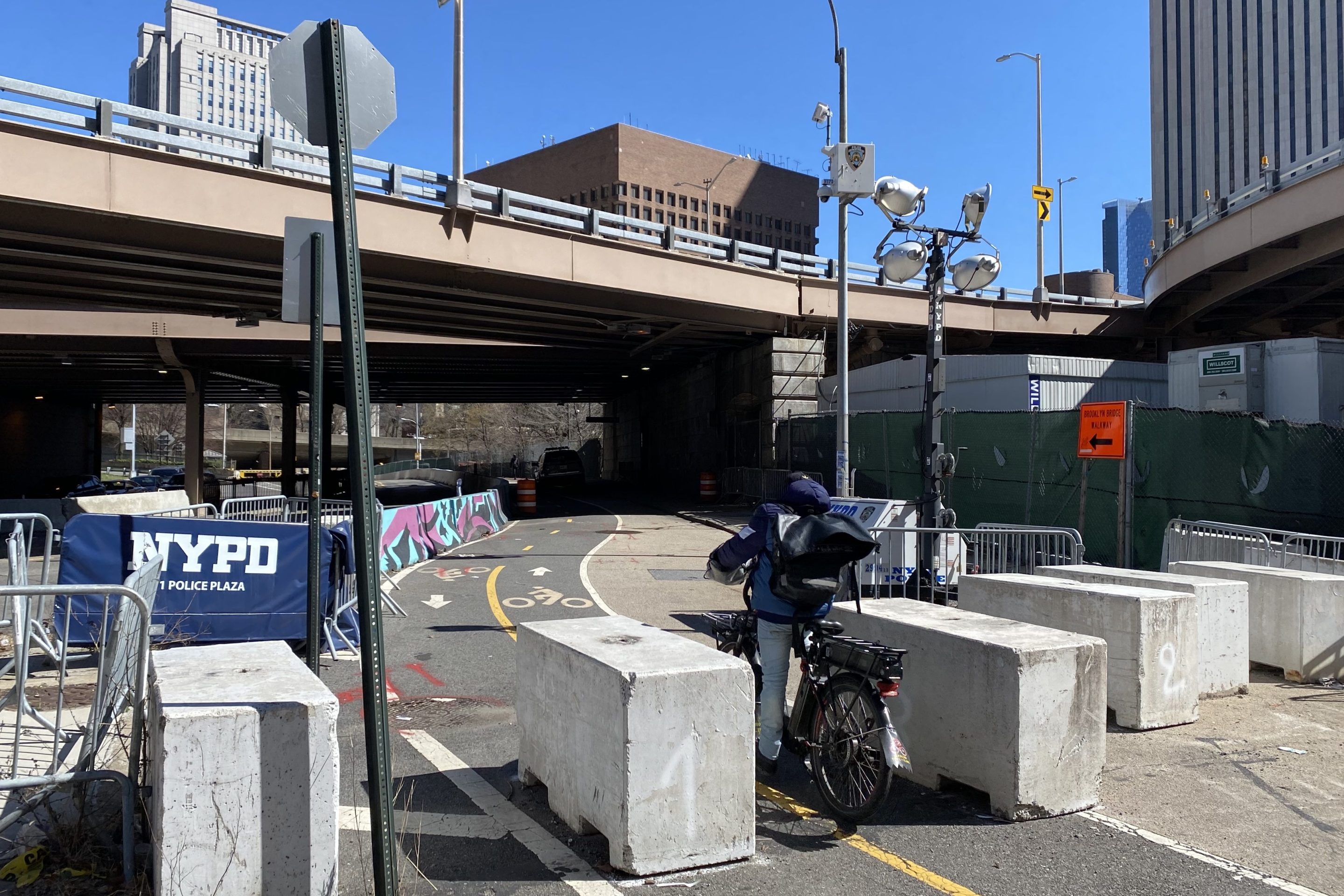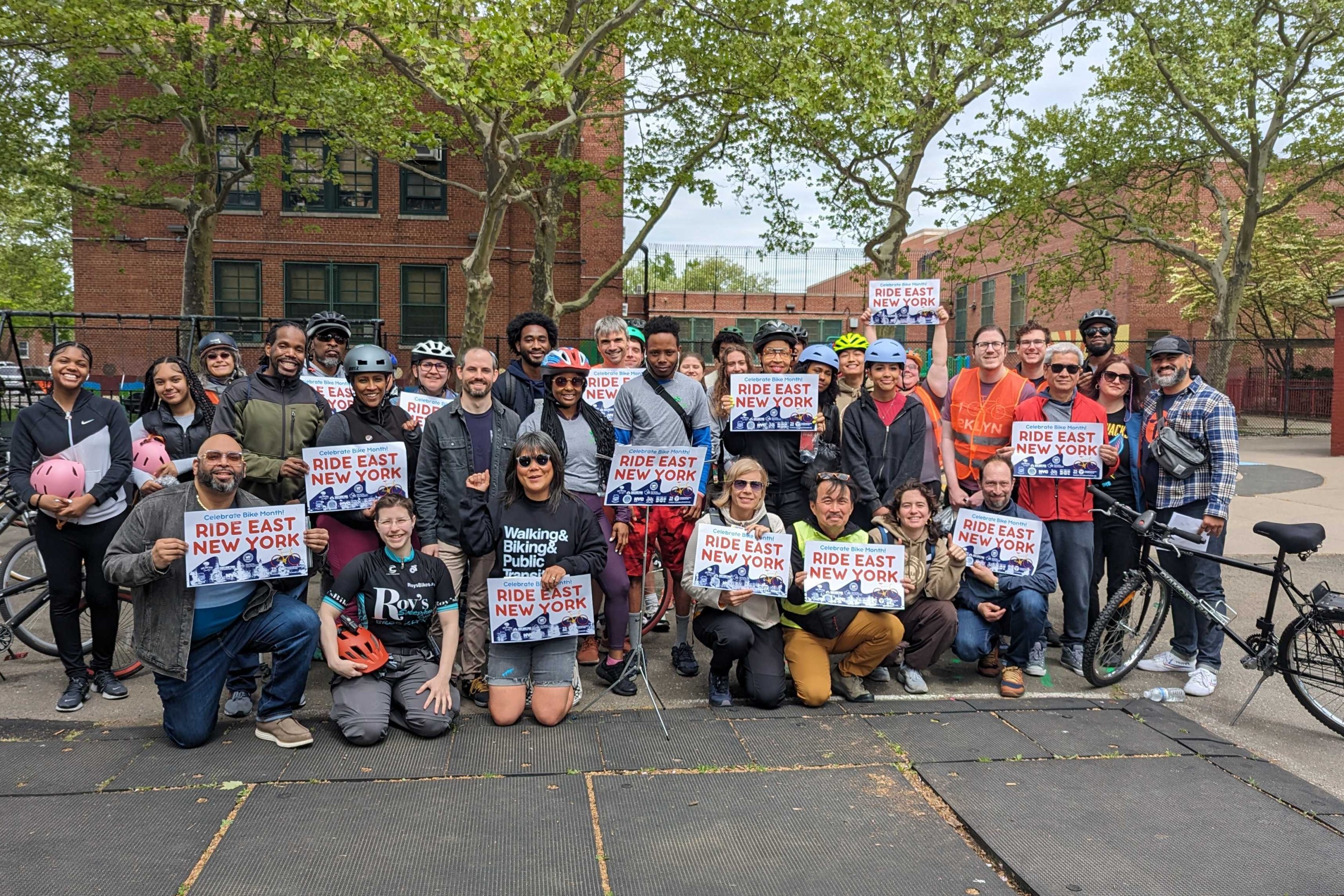 "The tragic loss of two bicyclists this week has shocked all of us and our thoughts and prayers are with the victims' families and friends. Unfortunately, New York City's crowded streets often cause conflict between cars and bicyclists as they attempt to share limited space."
"The tragic loss of two bicyclists this week has shocked all of us and our thoughts and prayers are with the victims' families and friends. Unfortunately, New York City's crowded streets often cause conflict between cars and bicyclists as they attempt to share limited space."
-- NYC DOT statement, June 29, 2006.
On Thursday, June 29, 2006, as DOT's press office was issuing the statement above, New York City Department of Transportation Commissioner Iris Weinshall was in Stockholm, Sweden. She was there to make two presentations to the 11th Annual IMPACTS conference, an international networking event for transportation administrators and professionals from cities in Europe, North America and Latin America.
The first day's focus was congestion pricing (Warning: most of these are links to PDF files) and on Thursday Weinshall's professional counterparts from Stockholm, London, Amsterdam and Copenhagen made detailed presentations on the far-reaching measures that they were taking to reduce traffic, use their cities "limited space" more efficiently, and reduce the type of "conflict" that killed three New York City cyclists in June alone.
Stockholm is the latest major world city to implement a congestion pricing system to reduce urban traffic and the conference kicked off with a presentation by the city's Deputy CEO, Gunnar Soderholm. According to Soderholm's Powerpoint presentation, available online, since launching the congestion pricing system in January, the number of vehicles driving in and out of Stockholm is down 20 to 25 percent. Congestion, or time spent sitting in traffic, is down 30 to 50 percent in the inner city. Noxious emissions have decreased 10 to 14 percent. And there have been no negative impacts on Stockholm's retail or economic growth. All of these results exceed the city's original goals. Facing widespread opposition at its start, polls now show that a majority of Stockholm residents approve of congestion pricing and say they will vote to keep it in place when the issue comes up as in a citywide referendum at the end of July.
Later in the day, a similar story was told by John Mason, Transport for London's Head of Enforcement. London's congestion pricing system, up and running for four years now, has reduced congestion in Central London by 26 percent. Thirty-seven percent fewer cars travel through the middle of the city. Congestion pricing is raising £110 million per year most of which is being plowed back into the city's bus network. As a result, bus patronage is way up and bus reliability and travel times have vastly improved. An unexpected side benefit of congestion pricing is that there are 40 to 70 fewer motor vehicle crashes annually in Central London, air quality has improved measurably and climate change-causing carbon dioxide emissions are down. Though there are fewer cars and less traffic, essentially the same number of people are traveling in and out of Central London daily, the impact on business has been "broadly neutral," and polling shows that the majority of businesses "recognize that decongestion has created a more pleasant working environment."
The focus of the conference's second day was "unexpected events." While European transportation administrators boasted of successes in reducing traffic and ambitious plans for the future, on Friday New York City's transportation commissioner made one presentation on New York City's response to December 2005 transit strike and another on post-9/11 security in New York City. Weinshall had no big traffic reduction strategies or plans to share with the assembled because unlike the other cities at the conference, New York City doesn't have any.
I asked a Department of Transportation spokesperson if Commissioner Weinshall took the opportunity of a Stockholm visit to "look at the new congestion pricing system, experience its effects, or talk with any officials about how it's working out." I was told that "the only time the Commissioner heard about congestion pricing was at the conference when a Stockholm government representative," presumably Soderholm, "spoke to the participants about it."
* * * *
If you only read the first sentence of DOT's brief response to the recent spate of bike fatalities on New York City's streets, it comes across as a nice statement. It's human. It expresses feelings. It's not every day that you get emotion out of a big government bureaucracy.
But then you get to that second sentence and it's all business. New York City's streets are "crowded." Crowding results in "conflict." Sure, when there is conflict between a car and bike, the car is usually going to win. But what are you gonna do? We've got "limited space" here in the big city. 'Flict happens. DOT can always point to the fact that overall pedestrian injury and fatality rates have fallen during the Weinshall years.
New Yorkers tend to view traffic congestion as something akin to the weather. It's good, it's bad, there is nothing much you can do about it. Traffic as a force beyond the control of mere mortals, just like New York City's murder rate and school system were once considered unmanagable and beyond fixing.
In its two sentence public statement on the deaths of Dr. Carl Nacht and Derek Lake, DOT seems happy to reinforce this notion. It is probably more bureaucratic reflex than conscious strategy. The agency has liability issues to consider. And their job is probably a whole lot easier if the public isn't too involved. The last thing DOT needs is community groups running around thinking that New York City could actually do something about traffic congestion. DOT is, after all, the city agency that would have to do it.
And yet, other world cities are proving that it is entirely possible to do something to reduce urban traffic congestion. If Commissioner Weinshall sat in on some of the presentations of her European colleagues on Thursday, she knows.
Thoughts and prayers are nice. But they are not what New York City needs from its transportation agency.
 "The tragic loss of two bicyclists this week has shocked all of us and our thoughts and prayers are with the victims' families and friends. Unfortunately, New York City's crowded streets often cause conflict between cars and bicyclists as they attempt to share limited space."
"The tragic loss of two bicyclists this week has shocked all of us and our thoughts and prayers are with the victims' families and friends. Unfortunately, New York City's crowded streets often cause conflict between cars and bicyclists as they attempt to share limited space." 



